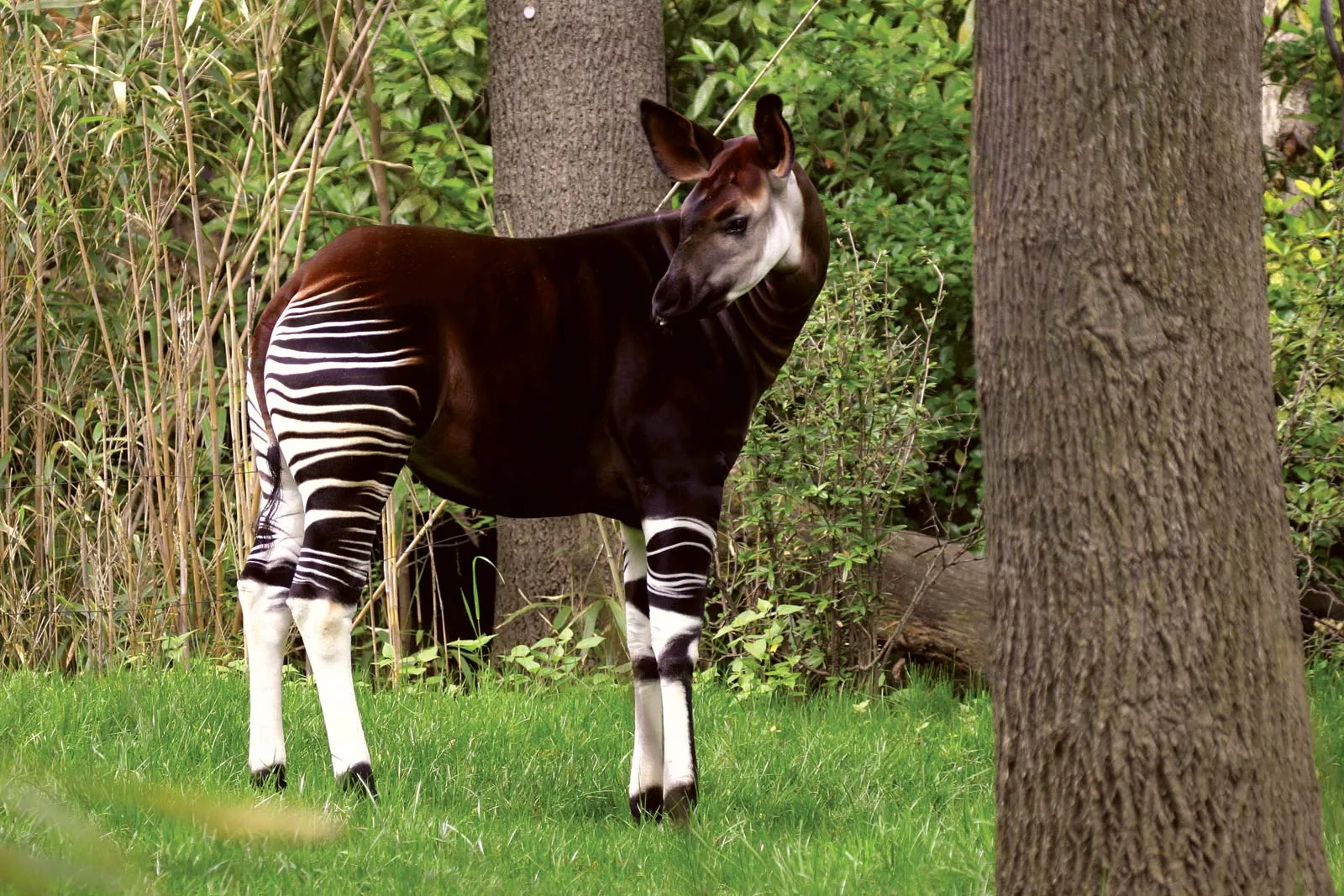
Africa is renowned for its extraordinary biodiversity, hosting numerous species that are found nowhere else on Earth. This rich array of flora and fauna highlights the continent’s unique ecological significance, drawing researchers, conservationists, and nature enthusiasts from around the globe.
The Okapi: A Hidden Gem in the Congo Rainforest
One of Africa’s most fascinating inhabitants is the elusive okapi, often referred to as the “forest giraffe.” Endemic to the dense rainforests of the Democratic Republic of Congo, the okapi is a striking animal with a unique appearance, featuring the body of a horse, the striped legs of a zebra, and a long neck reminiscent of its giraffe relatives. Discovered by Western scientists only in the early 20th century, the okapi remains a symbol of the mysterious and unexplored nature of Africa’s interior forests.
Despite its secretive nature, the okapi plays a crucial role in its ecosystem, contributing to seed dispersal and maintaining the health of the rainforest. Conservation efforts are critical to protect this species, as its habitat faces threats from deforestation and human encroachment.
Fynbos: The Floral Marvel of South Africa
On the southern tip of the continent lies the Cape Floral Kingdom, home to the remarkable fynbos vegetation. This unique biome, found only in South Africa, boasts one of the highest concentrations of plant species in the world. The fynbos region contains over 9,000 plant species, with nearly 70% of them endemic, including the famous proteas, ericas, and restios.
The fynbos is not only a botanical treasure trove but also a vital component of South Africa’s natural heritage. Its plants are well-adapted to the region’s Mediterranean climate, characterized by wet winters and dry summers. Fire plays a significant role in the fynbos ecosystem, with many plant species dependent on periodic fires for regeneration and seed dispersal.
Conservation Efforts and Challenges
The preservation of Africa’s unique species and habitats is an ongoing challenge, necessitating concerted efforts from governments, conservation organizations, and local communities. Habitat loss, climate change, and poaching pose significant threats to the continent’s biodiversity. However, numerous initiatives are underway to address these issues, including protected areas, wildlife reserves, and community-based conservation programs.
In the Congo rainforest, efforts to protect the okapi involve anti-poaching patrols, habitat restoration, and community education to promote sustainable livelihoods. Similarly, in South Africa, the management of fynbos regions includes fire management practices, invasive species control, and the establishment of conservation corridors to ensure the survival of this unique vegetation.
Africa’s unparalleled biodiversity, exemplified by species like the okapi and the fynbos vegetation, underscores the continent’s global ecological importance. Protecting these unique species and their habitats is essential for maintaining the planet’s natural heritage. Through continued conservation efforts and international cooperation, there is hope that Africa’s incredible biodiversity will be preserved for future generations to marvel at and enjoy.
